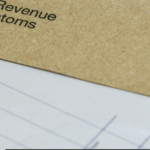HM Revenue & Customs (HMRC) will drastically reduce the number of letters it sends to taxpayers, aiming to cut its outbound post by 75% by the 2028–29 tax year as part of a major move toward digital-first operations.
The policy shift, confirmed during Wednesday’s spending review, is expected to save the department £50 million annually. Under the new plan, most correspondence — including general updates and routine notifications — will be handled online. Only letters that directly generate revenue, such as tax bills and compliance notices, will continue to be sent by post.
The government said the changes represent a key milestone in HMRC’s ambition to become a “digital-first organisation,” with 90% of customer interactions expected to be online within the next few years.
“Reducing the number of letters we send and communicating in different ways instead will provide a better service for our customers in line with modern-day expectations,” an HMRC spokesperson said.
However, the plan has sparked concern among tax professionals and advocacy groups, who warn it could disadvantage vulnerable individuals who rely on traditional communication. Lindsay Scott, spokesperson for the Chartered Institute of Taxation (CIOT), said: “Plans to phase out post must be handled with care. About seven million people in the UK still need help to navigate digital services — they can’t simply be left behind.”
Despite growing digital adoption — with HMRC reporting that 70% of interactions are now online — a significant number of people still submit paper tax returns. Last year, over 300,000 returns were filed on paper.
The decision comes amid ongoing criticism of HMRC’s digital services. A December survey by the CIOT and the Institute of Chartered Accountants in England and Wales (ICAEW) revealed low satisfaction with key digital channels:
Webchat satisfaction stood at just 28%, with connections successful less than half the time.
Phone service satisfaction was 56%, with average wait times of 23 minutes.
More than a third of callers abandoned their calls before getting through.
In response, the government has pledged £1.6 billion over four years to modernise HMRC’s core technology, alongside £500 million to improve digital service performance. Additionally, 7,900 new compliance and debt recovery staff will be hired, with the Treasury projecting the reforms could generate an extra £7.5 billion annually by 2029–30.
Critics remain wary. “It’s telling that the only letters guaranteed to stay are the ones that ask for money,” said one tax adviser. “It feels like HMRC is prioritising revenue over support.”
As the department pushes forward with digital transformation, the success of the programme may ultimately hinge on ensuring that accessibility and service quality do not come at the expense of inclusion.








